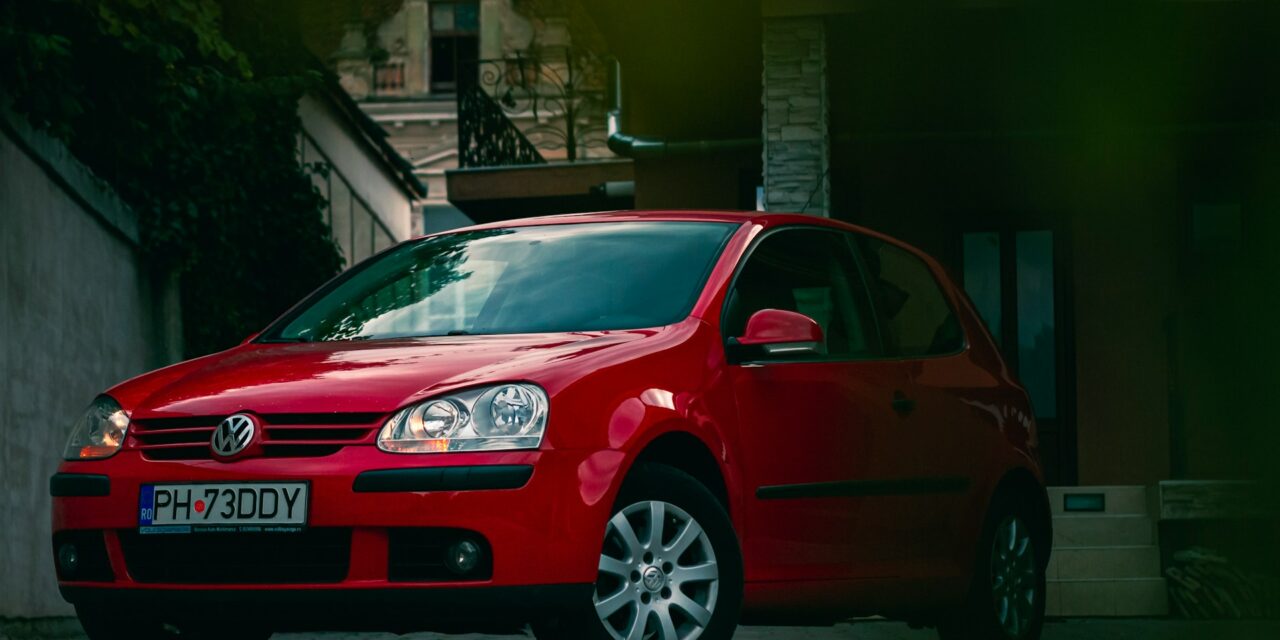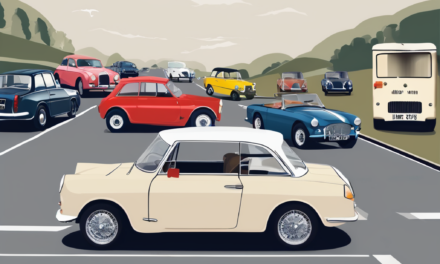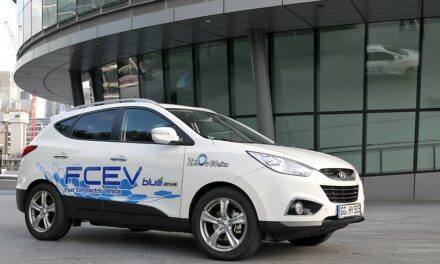- Key Takeaways
- Origins of Volkswagen
- Wartime Production
- Post-War British Control
- Symbol of Post-War Germany
- Transition from Beetle to Golf
- Expansion of Product Range
- Focus on Electric Cars
- Emissions Scandal Overview
- Motorsport Achievements
- Global Market Impact
- Closing Thoughts
- Frequently Asked Questions
- What are the origins of Volkswagen?
- How did Volkswagen contribute during wartime?
- What happened to Volkswagen post-war?
- Why is Volkswagen considered a symbol of post-war Germany?
- How did Volkswagen transition from Beetle to Golf?
- What is Volkswagen’s focus on electric cars?
- What was the Volkswagen emissions scandal about?
Did you know that Volkswagen has produced over 150 million vehicles since its inception? The complete history of Volkswagen is a captivating journey through time, showcasing innovation, resilience, and transformation. From its humble beginnings in the 1930s to becoming a global automotive giant, Volkswagen’s story is filled with iconic models and groundbreaking technologies. This post delves into the milestones that have shaped the brand, exploring key moments and legendary cars that have left an indelible mark on the story of the automotive world.
Discover the story of how Volkswagen navigated challenges, embraced change, and continually evolved. Whether you’re a car enthusiast or just curious about automotive history, this comprehensive overview offers valuable insights into one of the most influential car manufacturers in history.
Origins of Volkswagen
Early Development
Volkswagen’s origins trace back to 1934. The Nazi regime initiated the development of the “Käfer” or Beetle. This project aimed to create an affordable car for German families. Ferdinand Porsche was tasked with designing the vehicle.
Establishment
On May 28, 1937, the company “Gesellschaft zur Vorbereitung des Deutschen Volkswagens mbH” was established. This name translates to “Company for the Preparation of the German People’s Car Ltd.” It marked a significant step in making the Beetle a reality.
Renaming and Expansion
In 1938, the company was renamed “Volkswagenwerk GmbH”. This new name means “The People’s Car Factory Ltd.” That same year, they began building their main plant in Wolfsburg. The plant became one of the largest car factories in Europe.
World War II Impact
During World War II, Volkswagenwerk GmbH shifted its focus. Instead of producing cars for civilians, it manufactured military vehicles. The factory also used forced labour from occupied countries. This period left a dark chapter in Volkswagen’s history.
Post-War Reconstruction
After the war, Volkswagen faced challenges. The British took control of the Wolfsburg plant in 1945. They played a crucial role in reviving production. By 1949, Volkswagenwerk GmbH transitioned into “Volkswagenwerk AG”, becoming a public company.
Wartime Production
Halt in Production
In 1939, the outbreak of World War II halted the mass production of Volkswagen vehicles. The company had to adapt to the demands of wartime. Civilian car production was no longer a priority. Instead, resources were redirected to support the war effort.
Military Vehicles
Volkswagen shifted its focus to producing military vehicles. The Type 82 Kübelwagen became one of their most notable contributions. This vehicle was designed for the German army and saw extensive use during the war. Another significant model was the Schwimmwagen, an amphibious vehicle used in various terrains.
Forced Labour
During these times, Volkswagen utilised forced labour. Many workers were brought from occupied countries. They worked under harsh conditions to meet production demands. This dark chapter in Volkswagen’s history is well-documented.
Armaments Production
Apart from vehicles, Volkswagen also produced armaments. Factories were repurposed to manufacture military equipment. This included aircraft parts and other essential components for the war effort. The shift was a significant deviation from their original mission.
Impact on Generations
The wartime activities had a lasting impact on future generations. Post-war, Volkswagen had to rebuild its reputation. The use of forced labour left a stain that took years to address. However, subsequent generations worked hard to transform Volkswagen into a symbol of quality and innovation.
Post-War British Control
British Instructions
At the end of 1945, the British military took control of Volkswagen. They instructed the company to resume production of the Volkswagen saloon. This model later became known as the Type 1 or Käfer. The British saw potential in the car’s design and durability.
Birth of an Icon
The Type 1, also called the Beetle, quickly gained popularity. By 1949, it was being exported to other countries. The Beetle’s simple design made it easy to produce and maintain. It soon became a symbol of post-war recovery.
In 1950, Volkswagen introduced the Type 2 model. This vehicle was known as the Transporter or Microbus. It was designed for commercial use but became popular with families and travellers. The Transporter offered versatility and reliability.
Joint-Stock Transformation
Volkswagen began transforming into a joint-stock corporation in 1960. This change allowed for more investment and growth. It marked a new era for the company. Volkswagen could now expand its market reach and product range.
Symbol of Post-War Germany
Economic Recovery
Volkswagen played a crucial role in Germany’s economic recovery after World War II. The company resumed production in 1945 under British control. By the late 1940s, Volkswagen began to thrive, producing around 1,000 cars per month.
This growth marked the start of Germany’s industrial resurgence. By 1955, Volkswagen had produced one million Beetles. This success contributed significantly to the country’s post-war economic boom, known as the “Wirtschaftswunder” or economic miracle.
Export Orientation
Volkswagen’s strong export orientation was key to its success. In 1947, the first Beetles were exported to the Netherlands. This was the beginning of Volkswagen’s international market presence.
By the 1960s, Volkswagen was exporting cars to over 150 countries. The brand became synonymous with reliability and affordability. This helped solidify its reputation worldwide.
International Market Presence
Volkswagen’s presence in international markets grew rapidly. In 1952, Volkswagen of America was established. This allowed for direct sales in the United States.
The Beetle became a cultural icon in many parts of the world. It represented simplicity and affordable mobility. By 1972, Volkswagen had sold over 15 million Beetles, surpassing the Ford Model T as the most-produced car in history.
Industrial Prowess
Volkswagen symbolised Germany’s industrial prowess during this period. The company invested heavily in research and development. This led to innovations in car manufacturing.
In 1964, Volkswagen acquired Auto Union, which later became Audi. This acquisition expanded Volkswagen’s product range and technological capabilities.
German Economic Miracle
Volkswagen gained recognition as a symbol of the German economic miracle. The company’s success mirrored Germany’s transformation from a war-torn nation to an industrial powerhouse.
Volkswagen’s factories provided thousands of jobs. The company’s growth also spurred the development of related industries such as steel and electronics.
By becoming a global brand, Volkswagen showcased Germany’s ability to compete on the world stage. This boosted national pride and confidence during a time of rebuilding.
Transition from Beetle to Golf
Launch of Golf
Volkswagen launched the series production of the Golf in Wolfsburg on March 29, 1974. This marked a significant shift for the company. The Golf was designed to replace the iconic Beetle.
The new model featured a front-wheel-drive layout. It had a transverse engine, setting it apart from the rear-engine, rear-wheel-drive Beetle. This design change was crucial for its success.
Success of Golf
The Golf quickly became popular. By 1976, Volkswagen had sold over one million units. This made it one of the fastest-selling cars in Europe.
Its popularity continued to grow. The Golf eventually became the best-selling European car. It overtook many competitors and solidified Volkswagen’s position in the market.
Modern Design
The transition from the Beetle to the Golf represented a move towards modernity. The Golf had a more angular design compared to the rounded shape of the Beetle.
This new design appealed to a younger audience. It reflected changing tastes and preferences in car design during the 1970s.
Impact on Volkswagen
The success of the Golf had a profound impact on Volkswagen. It helped the company recover from financial difficulties faced in the late 1960s and early 1970s.
Volkswagen’s focus shifted towards producing more modern and efficient vehicles. The Golf became a cornerstone of Volkswagen’s lineup, leading to other successful models like the Passat and Polo.
Global Reach
The Golf’s success was not limited to Europe. It gained popularity worldwide, including in North America and Asia.
Its global reach helped Volkswagen expand its market presence. The Golf became a symbol of reliability and innovation across various regions.
Evolution Over Time
Since its launch, the Golf has gone through multiple generations. Each generation brought improvements in technology, safety, and design.
The evolution of the Golf reflects Volkswagen’s commitment to innovation. The model continues to be relevant and popular even today.
Expansion of Product Range
New Models
In the 1970s, Volkswagen introduced several new models. These included the Passat, Scirocco, Golf, and Polo. Each model brought something unique to the table.
The Volkswagen Passat was launched in 1973. It was a mid-sized family car. The Scirocco followed closely in 1974. It was a sporty coupe aimed at younger buyers.
In 1974, Volkswagen launched the Golf. This model became one of their best-selling cars. It replaced the Beetle as the company’s flagship model. In 1975, they introduced the Polo. It was a small car designed for urban driving.
Manufacturing Systems
Volkswagen implemented innovative manufacturing systems in the 1970s and 1980s. These systems were flexible and efficient. They allowed for quick adjustments to production lines.
This flexibility enabled Volkswagen to produce multiple models simultaneously. It also helped them respond quickly to market demands.
By adopting these systems, the company reduced production costs. They also improved product quality.
Technological Advances
In the 1980s, Volkswagen made significant advances in vehicle technology. They focused on improving fuel efficiency and reducing emissions.
One notable innovation was the introduction of turbocharged engines. These engines provided more power without increasing fuel consumption. The company also invested in developing cleaner diesel engines.
Volkswagen’s commitment to technology extended to safety features as well. They introduced anti-lock braking systems (ABS) and airbags in their vehicles.
International Cooperation
During the 1980s, Volkswagen expanded its international presence. They entered into partnerships with other automobile manufacturers.
One significant partnership was with SEAT, a Spanish carmaker. In 1986, Volkswagen acquired a majority stake in SEAT. This move helped Volkswagen gain a foothold in the Spanish market.
Another important collaboration was with China. In 1984, Volkswagen formed a joint venture with Shanghai Automotive Industry Corporation (SAIC). This partnership marked Volkswagen’s entry into the Chinese market.
Growth and Future Prospects
The expansion of Volkswagen’s product range contributed to its growth in the late 20th century. The introduction of new models like the Golf and Polo attracted a broader audience.
Technological advances ensured that Volkswagen remained competitive. Their focus on fuel efficiency and safety resonated with consumers worldwide.
International cooperation further boosted their global presence. Partnerships with companies like SEAT and SAIC opened new markets for Volkswagen.
Focus on Electric Cars
E-Mobility Solutions
Volkswagen has been at the forefront of developing cutting-edge solutions for e-mobility. They launched their first electric vehicle, the e-Golf, in 2013. This compact car was a milestone in their journey towards sustainable transportation. By 2020, they introduced the ID.3, a fully electric vehicle designed from the ground up to be electric.
The company aims to make electric cars more accessible. They have invested heavily in research and development to improve battery technology and reduce costs. Their goal is to produce affordable electric vehicles without compromising on quality or performance.
Research and Development
Volkswagen’s commitment to electric vehicles is evident in their investment in research and development. The company spends billions annually on advancing electric vehicle technology. They focus on improving battery efficiency, increasing range, and reducing charging times.
In 2017, Volkswagen announced plans to invest €20 billion in electrification by 2030. This includes developing new models and upgrading existing ones to be more eco-friendly. Their modular electric drive matrix (MEB) platform is a key part of this strategy, allowing for flexible production of various electric cars.
Sustainable Transportation
Volkswagen positions itself as a leader in sustainable transportation. They aim to become carbon neutral by 2050. To achieve this, they are transforming their entire fleet to include more electric vehicles.
The company also focuses on renewable energy sources for manufacturing. They have set up solar and wind farms to power their plants. This helps reduce the carbon footprint of producing each vehicle.
Market Impact
Volkswagen’s shift towards electric cars has had a significant impact on the market. Their ID series, including the ID.4 SUV, has received positive reviews for its performance and design. These vehicles offer competitive range and pricing, making them attractive options for consumers.
The company also participates in events like Techno Classica to showcase their innovations. This helps maintain their reputation as a forward-thinking automaker.
Future Prospects
Looking ahead, Volkswagen plans to continue expanding its electric vehicle lineup. They aim to launch over 70 new electric models by 2028. This ambitious goal reflects their dedication to leading the future of mobility.
They are also exploring autonomous driving technologies. Combining these with electric propulsion could revolutionise how people travel.
Emissions Scandal Overview
2015 Scandal
In 2015, Volkswagen was found to have installed software in their diesel vehicles. This software manipulated emissions tests. It made the cars appear more environmentally friendly than they were. The scandal affected about 11 million vehicles worldwide.
The US Environmental Protection Agency (EPA) discovered the deceit. They announced it on 18th September 2015. This revelation caused a massive uproar globally.
Brand Reputation
The scandal severely damaged Volkswagen’s reputation. Trust in the brand plummeted. Customers felt betrayed by the company’s actions. Many questioned Volkswagen’s commitment to environmental standards.
Sales dropped significantly in the years following the scandal. The company faced protests and backlash from environmental groups.
Financial Penalties
Volkswagen faced hefty financial penalties. In January 2017, they agreed to a $4.3 billion settlement with the US Department of Justice. This included criminal and civil fines. The total cost of the scandal exceeded $30 billion when considering all global settlements and recalls.
These penalties strained Volkswagen’s finances. They had to allocate significant resources to address the fallout.
Consumer Trust
Volkswagen implemented several measures to regain consumer trust. They launched a comprehensive recall programme to fix affected vehicles. They also offered buybacks and compensation to owners of affected cars.
The company invested heavily in marketing campaigns to rebuild its image. They emphasised their commitment to transparency and compliance with environmental regulations.
Compliance Measures
Volkswagen took steps to ensure future compliance with emissions standards. They established an independent compliance office. This office oversees adherence to regulations and internal policies.
They also increased investment in electric vehicles (EVs). By focusing on EVs, Volkswagen aims to shift away from diesel engines and promote cleaner alternatives.
Motorsport Achievements
Rally Dominance
Volkswagen entered the rally scene in the 1980s. They initially participated in the World Rally Championship (WRC) with the Golf GTI. The team saw modest success during this period.
In 2013, Volkswagen returned to WRC with the Polo R WRC. They dominated from 2013 to 2016. Sébastien Ogier, driving for Volkswagen, won four consecutive drivers’ championships. The Polo R WRC also secured four constructors’ titles during this time.
Endurance Racing
Volkswagen has a long history in endurance racing. They first gained attention in the 1960s with the Type 1 Beetle. The Beetle participated in events like the Baja 1000 and achieved notable successes.
In recent years, Volkswagen focused on electric vehicles in endurance racing. In 2018, they introduced the ID.R, an all-electric race car. The ID.R set records at Pikes Peak and Nürburgring Nordschleife.
Technological Innovation
Motorsport serves as a testing ground for new technologies. Volkswagen uses their motorsport achievements to develop advanced features for their mass-market vehicles.
The Polo R WRC featured a turbocharged engine and all-wheel drive. These technologies later appeared in consumer models like the Golf R. Similarly, innovations from the ID.R influence Volkswagen’s electric vehicle lineup.
Brand Promotion
Success in motorsport enhances Volkswagen’s brand image. Winning prestigious races and championships boosts their reputation globally.
Motorsport achievements also help Volkswagen reach new audiences. Their participation in events like WRC and Pikes Peak showcases their engineering prowess. This exposure translates into increased sales and brand loyalty.
Global Market Impact
International Expansion
Volkswagen expanded its presence in international markets significantly. By the 1950s, it began exporting cars to the United States. In 1955, Volkswagen of America was established. This move helped the company penetrate the lucrative North American market.
In the 1970s and 1980s, Volkswagen set up production facilities in countries like Brazil and Mexico. These plants enabled them to produce cars closer to their target markets. It also reduced costs and improved delivery times.
Diverse Market Demands
Volkswagen adapted to diverse market demands worldwide. Each region had unique preferences and needs. For example, in Europe, smaller cars were more popular due to narrow streets and higher fuel prices. The Volkswagen Golf became a favourite in this market.
In contrast, larger vehicles were preferred in North America. The introduction of models like the Volkswagen Passat and Jetta catered to this demand. They offered more space and comfort for longer drives.
Consumer Preferences
The company paid attention to consumer preferences globally. In China, they noticed a growing middle class with a taste for luxury vehicles. Volkswagen introduced premium brands like Audi to meet this demand.
Electric vehicles have become increasingly important in recent years. Volkswagen launched its ID series to cater to eco-conscious consumers around the world. The ID.3 and ID.4 models have been well-received for their design and performance.
Global Production Facilities
Volkswagen established global production facilities to support its international expansion. By 2019, they had over 120 production plants in 31 countries. These facilities produce millions of vehicles annually.
In Germany, the Wolfsburg plant remains one of the largest car factories in the world. It produces various models including the Golf and Tiguan. In China, joint ventures with local companies have resulted in multiple production sites across the country.
Automotive Industry Influence
Volkswagen maintains a significant influence on the global automotive industry. They are one of the largest car manufacturers by volume. In 2021, they produced over 8 million vehicles worldwide.
Their commitment to innovation has set industry standards. The development of electric vehicles has pushed other manufacturers to follow suit. Their focus on sustainability includes plans to become carbon-neutral by 2050.
Real-life Examples
Real-life examples highlight Volkswagen’s global impact. In Brazil, the iconic Beetle became a cultural symbol during the 1960s and 1970s. It was known locally as “Fusca” and remains beloved by many Brazilians.
In South Africa, Volkswagen’s Polo Vivo is a top-selling model. It is praised for its affordability and reliability, making it accessible to a broad audience.
Closing Thoughts
Volkswagen’s journey, from its origins to its current global impact, showcases resilience and innovation. You’ve seen how it navigated wartime challenges, post-war transformations, and modern controversies. The brand evolved from the iconic Beetle to embracing electric vehicles, reflecting its adaptability and forward-thinking ethos.
Now, it’s your turn to engage with Volkswagen’s legacy. Explore their latest models, consider how they fit into your lifestyle, or delve deeper into their history. Stay informed about their innovations and be part of their ongoing story. Your next step could be as simple as a test drive or a deeper dive into automotive history. Keep exploring and stay curious!
Frequently Asked Questions
What are the origins of Volkswagen?
Volkswagen was founded in 1937 in Germany. It aimed to produce affordable cars for the public, with the Beetle being its first iconic model.
How did Volkswagen contribute during wartime?
During World War II, Volkswagen shifted to military vehicle production, including the Kübelwagen and Schwimmwagen.
What happened to Volkswagen post-war?
After WWII, the British took control of Volkswagen. They revived the Beetle production, which became a symbol of post-war recovery.
Why is Volkswagen considered a symbol of post-war Germany?
The Beetle’s success represented Germany’s economic revival. It became a global icon of reliability and affordability.
How did Volkswagen transition from Beetle to Golf?
In 1974, Volkswagen launched the Golf. It marked a shift from rear-engine designs to more modern front-engine, front-wheel-drive layouts.
What is Volkswagen’s focus on electric cars?
Volkswagen is investing heavily in electric vehicles (EVs). Their ID. series aims to lead the market in sustainable mobility.
What was the Volkswagen emissions scandal about?
In 2015, Volkswagen admitted to using software to cheat emissions tests. This scandal affected millions of diesel vehicles globally.





